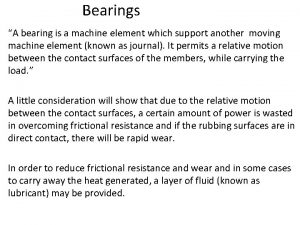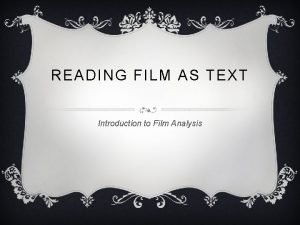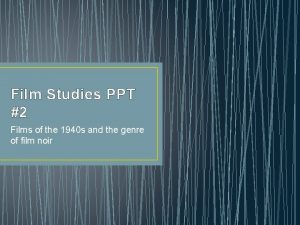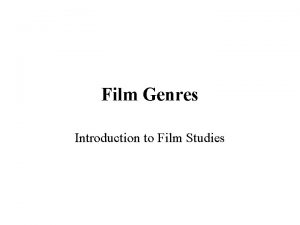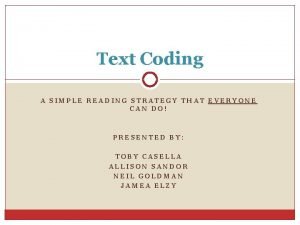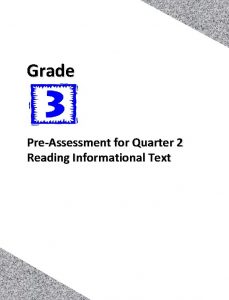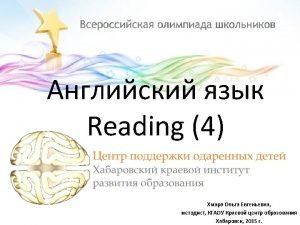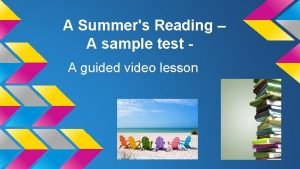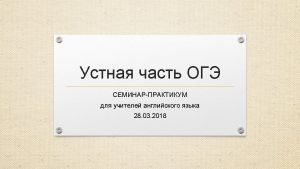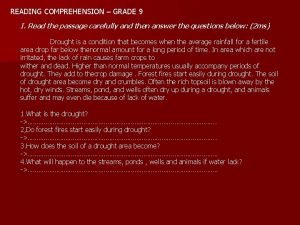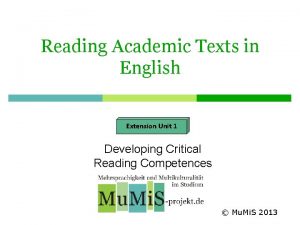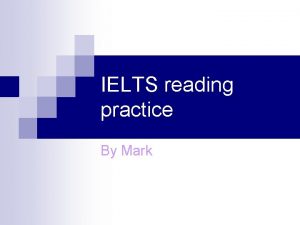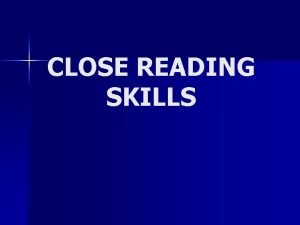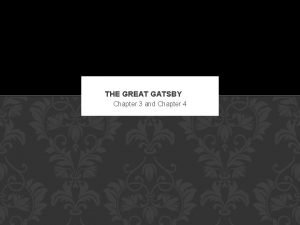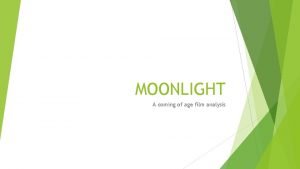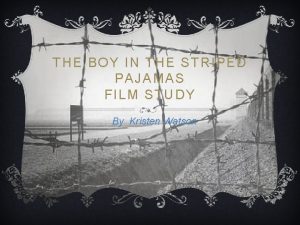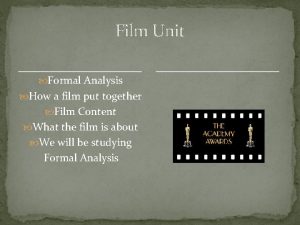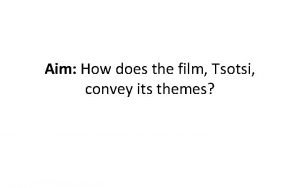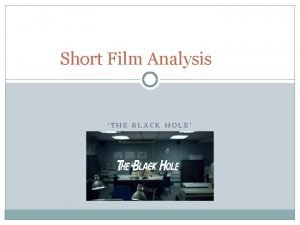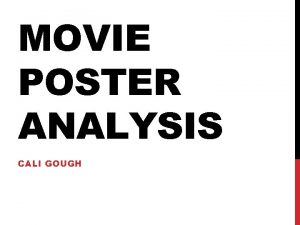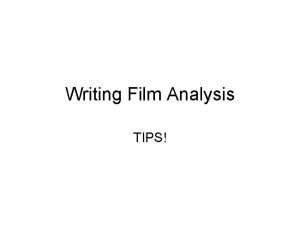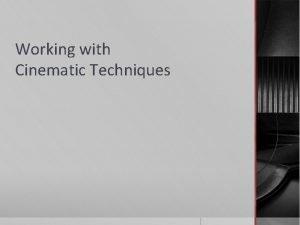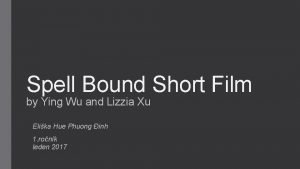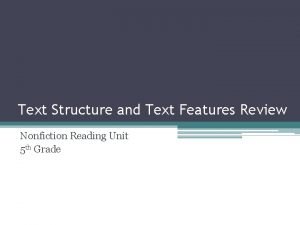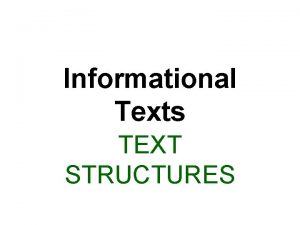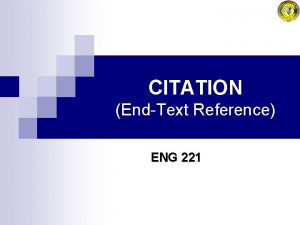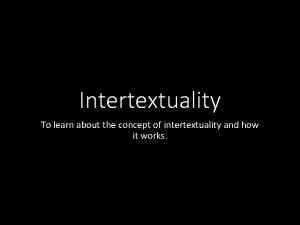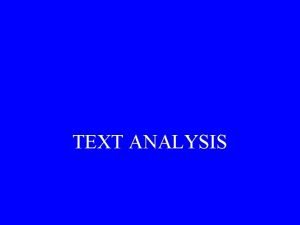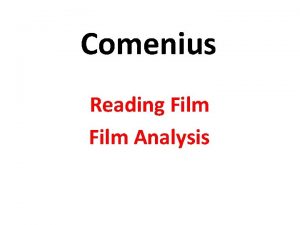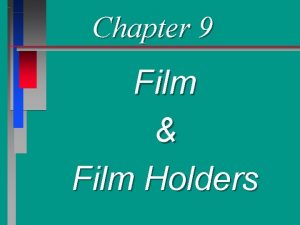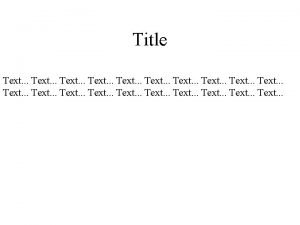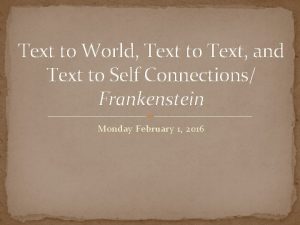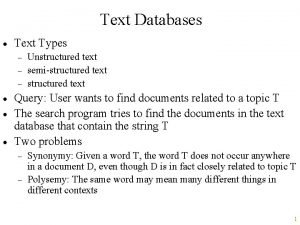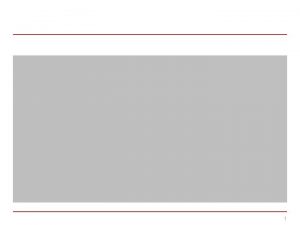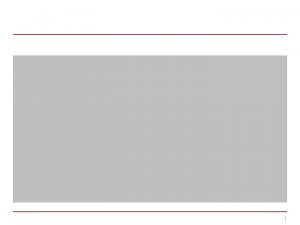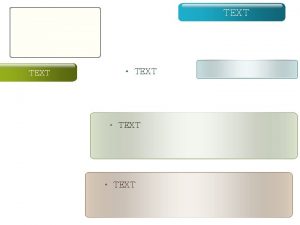READING FILM AS TEXT Introduction to Film Analysis












































- Slides: 44

READING FILM AS TEXT Introduction to Film Analysis

READING FILM AS TEXT Story Elements + Productions Elements = Film Narrative

STORY ELEMENTS These are the same things we look for and talk about when we read literature: v Plot v Character v Setting v Concepts/Themes v Motifs v Symbols

PRODUCTION ELEMENTS These are the productions elements used to make a film: v Visual elements v Auditory/sound elements

CINEMATOGRAPHY A general term for all the manipulations of the film by the camera in the shooting phase and by the laboratory in the developing phase. This includes camera shots, camera angles, camera movement, and lighting.

CAMERA MOVEMENT Composers of films use camera movement to shape meaning. Pan: A camera movement with the camera body turning to the right or left on a stationary tripod: on the screen it produces mobile framing which scans the space horizontally.

CAMERA MOVEMENT Tilt: A camera movement with the camera body swiveling upward or downward on a stationary support; it produces a mobile framing that scans the space vertically.

CAMERA MOVEMENT Tracking Shot/Dolly Shot: A camera movement with the camera body moving through space horizontal to the ground on a moving support; on the screen, it produces a mobile framing that travels through space forward, backward, or to one side. By using a tracking shot or a dolly shot the composer of a film gives the viewer a detailed tour of a situation. It can also be used to follow a character.

CAMERA ANGLES v The position of the frame in relation to the subject it shows Skwirk. com. au

BIRD'S EYE ANGLE A camera angle that looks directly down upon a scene. This angle is often used as an establishing angle, along with an extreme long shot, to establish setting. Skwirk. com. ua

BIRD’S EYE

HIGH ANGLE A camera angle that looks down upon a subject. A character shot with a high angle will look vulnerable or small. These angles are often used to demonstrate to the audience a perspective of a particular character. Skwirk. com. ua

HIGH ANGLE

EYE-LEVEL ANGLE A camera angle that puts the audience on an equal footing with the character/s. This is the most commonly used angle in most films as it allows the viewers to feel comfortable with the characters. Skwirk. com. ua

EYE LEVEL

LOW ANGLE A camera angle that looks up at a character. This is the opposite of a high angle and makes a character look more powerful. This can make the audience feel vulnerable and small by looking up at the character. This can help the responder feel empathy if they are viewing the frame from another character's point of view. Skwirk. com. ua

LOW ANGLE

CAMERA SHOTS There is a convention in the video, film and television industries which assigns names and guidelines to common types of shots, framing and picture composition. MEDIAcollege. com

EXTREME WIDE SHOT The view is so far from the subject that s/he isn't even visible. The point of this shot is to show the subject's surroundings. Used as an "establishing shot" - the first shot of a new scene, designed to show the audience where the action is taking place. It is also useful in scenes where the action is very spread out. For example, in a war movie an extreme wide shot can show the scale of the action. The EWS is also known as an extra long shot or extreme long shot (XLS). MEDIAcollege. com

EXTREME WIDE SHOT

VERY WIDE SHOT The very wide shot is much closer to the subject than an extreme wide shot, but still much further away than a wide shot. This often works as an establishing shot, in which the audience is shown the whole setting so they can orient themselves. The VWS also allows plenty of room for action to take place, or for multiple subjects to appear on screen. MEDIAcollege. com

VERY WIDE SHOT

WIDE SHOT In the wide shot, the subject takes up the full frame. The subject doesn't take up the whole width and height of the frame. The small amount of room above and below the subject can be thought of as safety room. MEDIAcollege. com

WIDE SHOT

MID (MEDIUM) SHOT The mid shot shows some part of the subject in more detail, whilst still showing enough for the audience to feel as if they were looking at the whole subject. In fact, this is an approximation of how we see a person "in the flesh" if we were having a casual conversation. We wouldn't be paying any attention to their lower body, so that part of the picture is unnecessary. The MS is appropriate when the subject is speaking without too much emotion or intense concentration. MEDIAcollege. com

MID (MEDIUM)

MEDIUM CLOSE UP The medium close up is half way between a mid shot and a close up. This shot shows the face more clearly, without getting uncomfortably close. MEDIAcollege. com

MEDIUM CLOSE UP

CLOSE UP In the close up shot, a certain feature or part of the subject takes up most of the frame. A close up of a person usually means a close up of their face (unless specified otherwise). Close-ups are obviously useful for showing detail and can also be used as a cut-in. A close-up of a person emphasizes their emotional state. Whereas a mid-shot or wide-shot is more appropriate for delivering facts and general information, a close-up exaggerates facial expressions which convey emotion. The viewer is drawn into the subject's personal space and shares their feelings. MEDIAcollege. com


EXTREME CLOSE UP The extreme close up (XCU) gets right in and shows extreme detail. You would normally need a specific reason to get this close. It is too close to show general reactions or emotion except in very dramatic scenes. A variation of this shot is the choker. MEDIAcollege. com

EXTREME CLOSE UP

OVER-THE-SHOULDER Over-the-shoulder shot is framed from behind a person who is looking at the subject. The person facing the subject should usually occupy about 1/3 of the frame. This shot helps to establish the position of each person, and get the feel of looking at one person from the other's point of view. It's common to cut between these shots during a conversation, alternating the view between the different speakers. MEDIAcollege. com

OVER-THE SHOULDER

CROSS CUTTING Editing that alternates shorts of two or more lines of action occurring in different places, usually simultaneously.

FADES Fade-in: A dark screen that gradually brightens as a shot appears. Fade-out: A shot gradually darkens as the screen goes black. (Occasionally fades brightens to pure white or to some blank color. )

MISE-EN-SCENE Mise-en-scene refers to all the objects and characters in a particular frame. More specifically, it refers to the composition of the frame. Analyzing mise-en-scene involves discussing where the composer or director has placed all the elements of the scene within the frame. Skwirk. com. ua

DIEGETIC SOUND Any voice, musical passage, or sound effect presented as originating from a source within the film’s world.

NONDIEGETIC SOUND Sound, such as mood music or a narrator’s voice, represented as being from a source outside the space of the narrative.

WHEN VIEWING THE OPENING SCENE, CONSIDER v What do you see? v What do you hear? v Where and when is this film set? How do you know? v What do you know about this period? v Who are the main characters? How do you know? v What is this film going to be about? How do you know? v What do the titles and theme music contribute to your understanding of the text?

ANALYZING SCENES & SHOTS v Why did the director choose this shot? (How does it contribute to the movie and to the big ideas? ) v How do we know what he/she meant for us to think? v How is the sound to be interpreted? v What does the scene/shot make you feel? (How does this contribute to the movie and to the big ideas? ) v What is included in the mise-en-scene? Why is it there?

READING V. VIEWING v To fully read/analyze a film, it is important to go beyond a mere summary of the film. Look for an angle that allows you to argue for something that goes beyond a surface level meaning. In this film, there is corruption of the adult world (a theme we’ve seen in the literature) and the idea of identity (another big idea in literature, maybe more so in postmodern literature). How can these two big ideas work together for an interpretation? Notice the difference between a summary and an interpretation.

SUMMARY v The Breakfast Club is a movie about a bunch of high school teenagers who serve detention on Saturday. Although the teens are separated by distinct stereotypical roles of high school students, they find a common bond by the end of the day.

INTERPRETATION v In The Breakfast Club, the corruption of the adult world forces the teenager into stereotypical roles, limiting their identities and their humanity. Rejecting the corrupt ideals of the adult world liberates the characters and empowers them to redefine their identities, resulting in more complex beings who develop a sense of compassion for each other. v What do we need to prove here? Narrative Elements? Productions Elements?
 Making connections images
Making connections images Pre reading while reading and post reading activities
Pre reading while reading and post reading activities Slipper or guide bearing
Slipper or guide bearing Film as text
Film as text St. louis
St. louis Aims of teaching reading
Aims of teaching reading What is intensive reading
What is intensive reading What is shared reading
What is shared reading Is an active process of discovery
Is an active process of discovery Intensive reading and extensive reading
Intensive reading and extensive reading Extensive reading
Extensive reading Types of reading skill
Types of reading skill Ppt
Ppt An introduction to film genres
An introduction to film genres Text coding reading strategy
Text coding reading strategy Chapter 2 reading informational text answer key
Chapter 2 reading informational text answer key Read the text and answer the questions that follow
Read the text and answer the questions that follow Reading part 6 b1
Reading part 6 b1 Kinds of reading text
Kinds of reading text A summer's reading analysis
A summer's reading analysis Task 1 read the text aloud
Task 1 read the text aloud Comprehension for grade 9
Comprehension for grade 9 What is academic text example
What is academic text example Ielts reading introduction
Ielts reading introduction Introduction to close reading
Introduction to close reading Chapter 4 great gatsby theme
Chapter 4 great gatsby theme Ilearn nwrc
Ilearn nwrc The boy in the striped pyjamas film
The boy in the striped pyjamas film Side lighting in film
Side lighting in film Formal elements of film
Formal elements of film Tsotsi film analysis
Tsotsi film analysis The black hole short film analysis
The black hole short film analysis Moonlight movie poster analysis
Moonlight movie poster analysis How to write a film analysis
How to write a film analysis Film analysis techniques
Film analysis techniques Citáty o sourozenecké lásce
Citáty o sourozenecké lásce What is a text box text feature
What is a text box text feature Ce înseamnă un text nonliterar
Ce înseamnă un text nonliterar Text features vs text structures
Text features vs text structures Generic structure report text
Generic structure report text Image into text
Image into text Text _____ in a nonfiction text is its organization.
Text _____ in a nonfiction text is its organization. End-text reference example
End-text reference example It is the shaping of a text’s meaning by another text
It is the shaping of a text’s meaning by another text Close reading annotation symbols
Close reading annotation symbols


